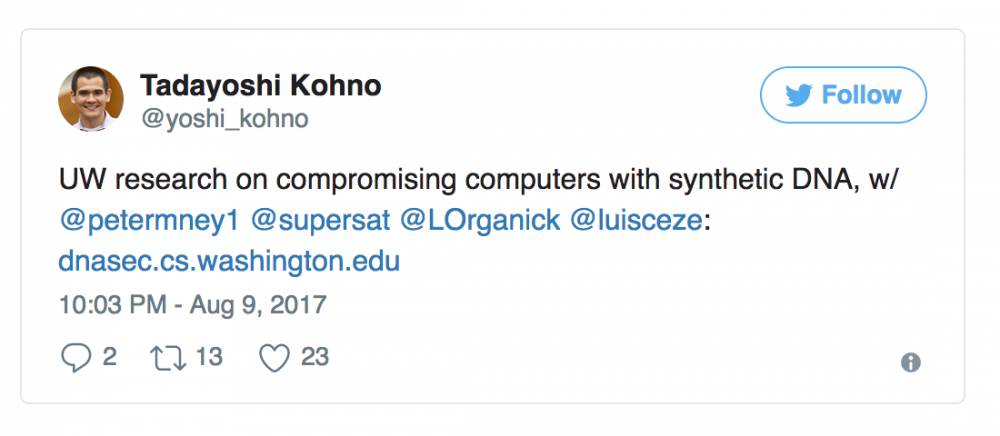Rise of the Biohackers: Researchers Encode Malware in DNA Strands in World First
Source
University of Washington researchers have successfully encoded malware into DNA strands, using it to exploit a computer that analyzed the genetic material in a groundbreaking world first. The breakthrough throws up a number of troubling possibilities - one being malware encoded into genetic material potentially becoming a threat vector.
The team, led by Professor Tadayoshi Kohno (who has a history of investigating unusual attack vectors), were inspired out of concern that security infrastructure around DNA transcription and analysis was inadequate, having found elementary vulnerabilities in open-source software used in labs around the world.
Given the nature of the data typically handled, this could be a major issue in future — as the molecular and electronic worlds grow ever-closer, potential interactions between the two loom on the horizon, which no one has hitherto contemplated.

While it would've been possible to demonstrate the weakness of the systems using typical malware and remote access tools, as a competent cyberattacker would, the team decided to push their idea as far as possible, to defend against every eventuality.




















